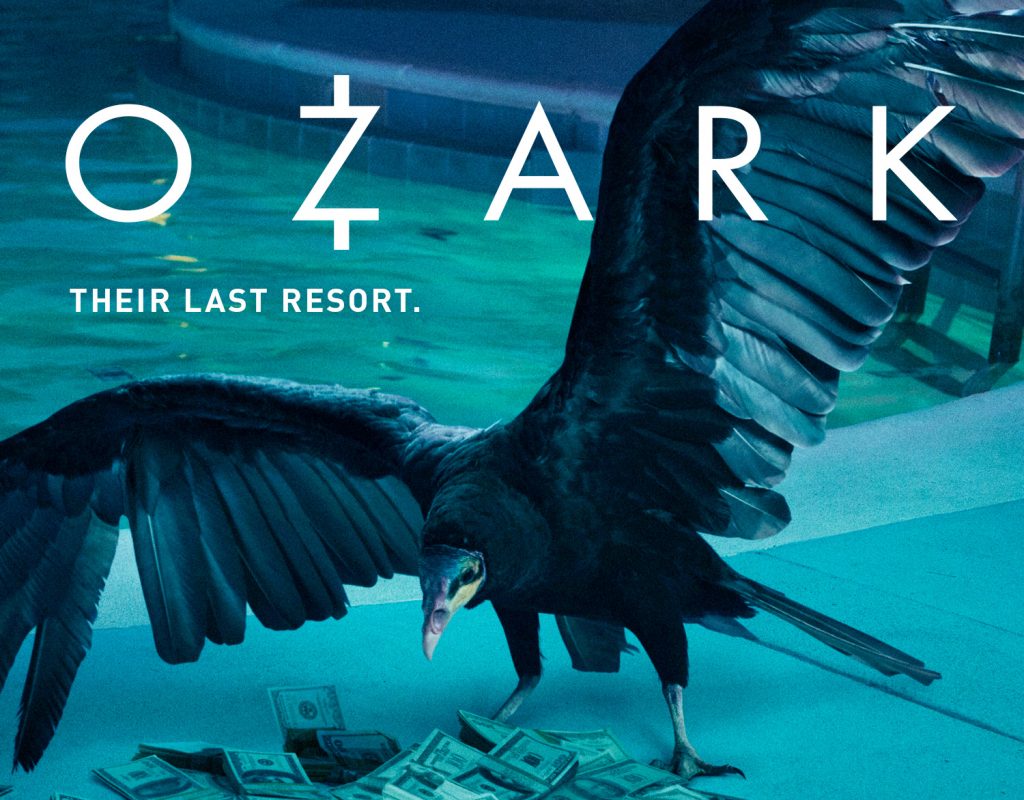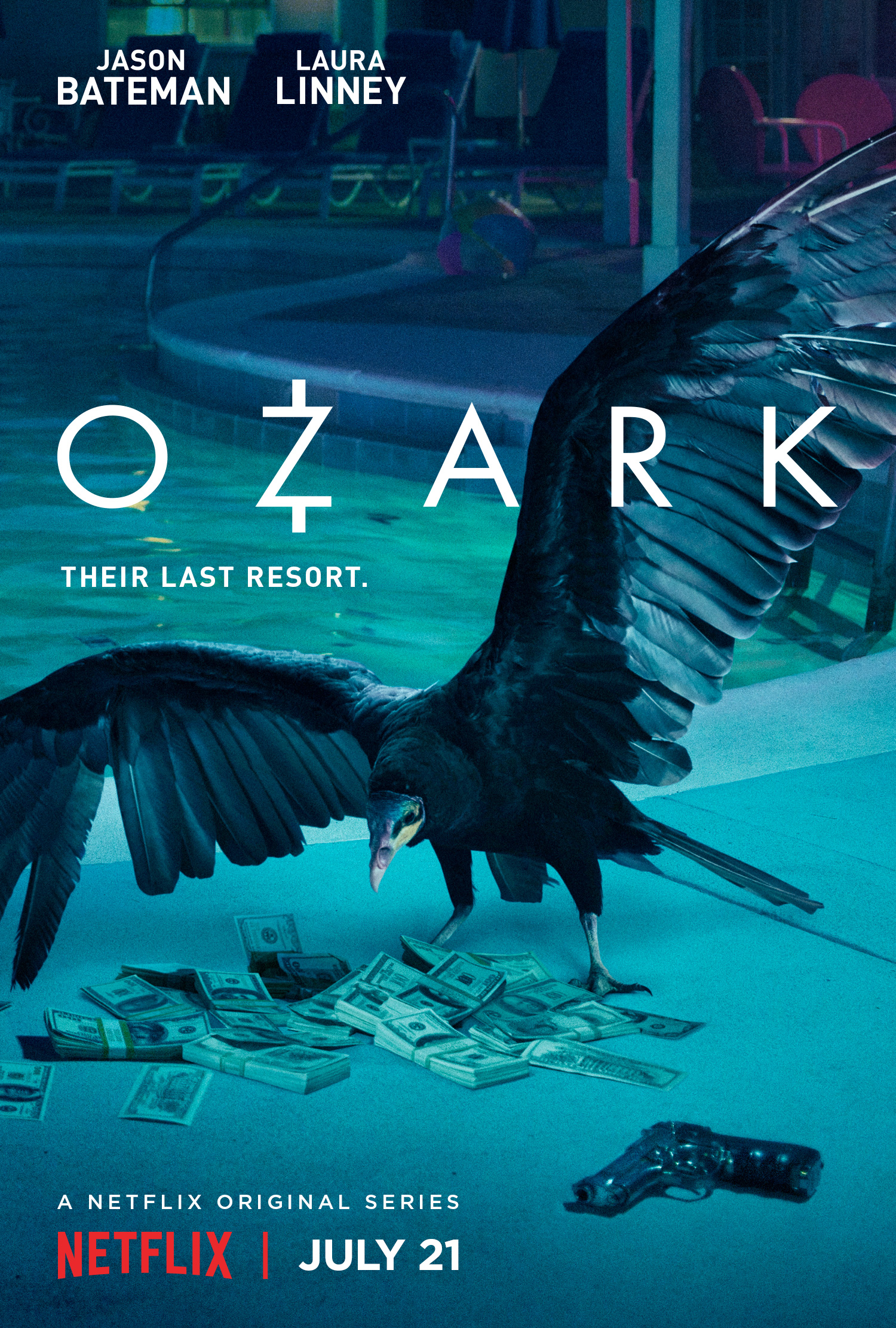 I interviewed Cindy Mollo, ACE and Vikash Patel about their work on the stellar Netflix series, Ozark.
I interviewed Cindy Mollo, ACE and Vikash Patel about their work on the stellar Netflix series, Ozark.
Cindy’s TV credits include Homicide: Life on the Street, Oz, Mad Men (for which she was nominated for a Primetime Emmy in 2007), and House of Cards. She has also edited feature films: Ready to Rumble, The Book of Eli, and Broken City.
Vikash has cut for Top Chef (for which he won a Primetime Emmy in 2008), Terminator: The Sarah Connor Chronicles, Smallville, and Longmire among many other TV series. His work also includes feature films Blood Deep, The Story of Luke, and Homecoming.
HULLFISH: Tell me the schedule for the shooting and editing of Ozark.
MOLLO: We cross board and shoot two episodes at the same time, which is great. Feels like a feature where you really sink your teeth into the characters, performances and situations. We shot more days in the first season than the second. I think it was 12 days/episode in season 1 and 11 days/episode in season 2.
We have 8 days for the two Editor’s Cuts (and last dailies) and 8 days for the two Director’s Cuts. Ideally, the calendar has us working on one episode at a time but I divide those 8 days of Editor’s Cut and Director’s Cut, however, I need to.
The Producers’ Cut Period varies as does the Studio/Network Cut period depending on how much work Chris Mundy (writer and show runner) and Jason Bateman (EP) feel the episode needs.
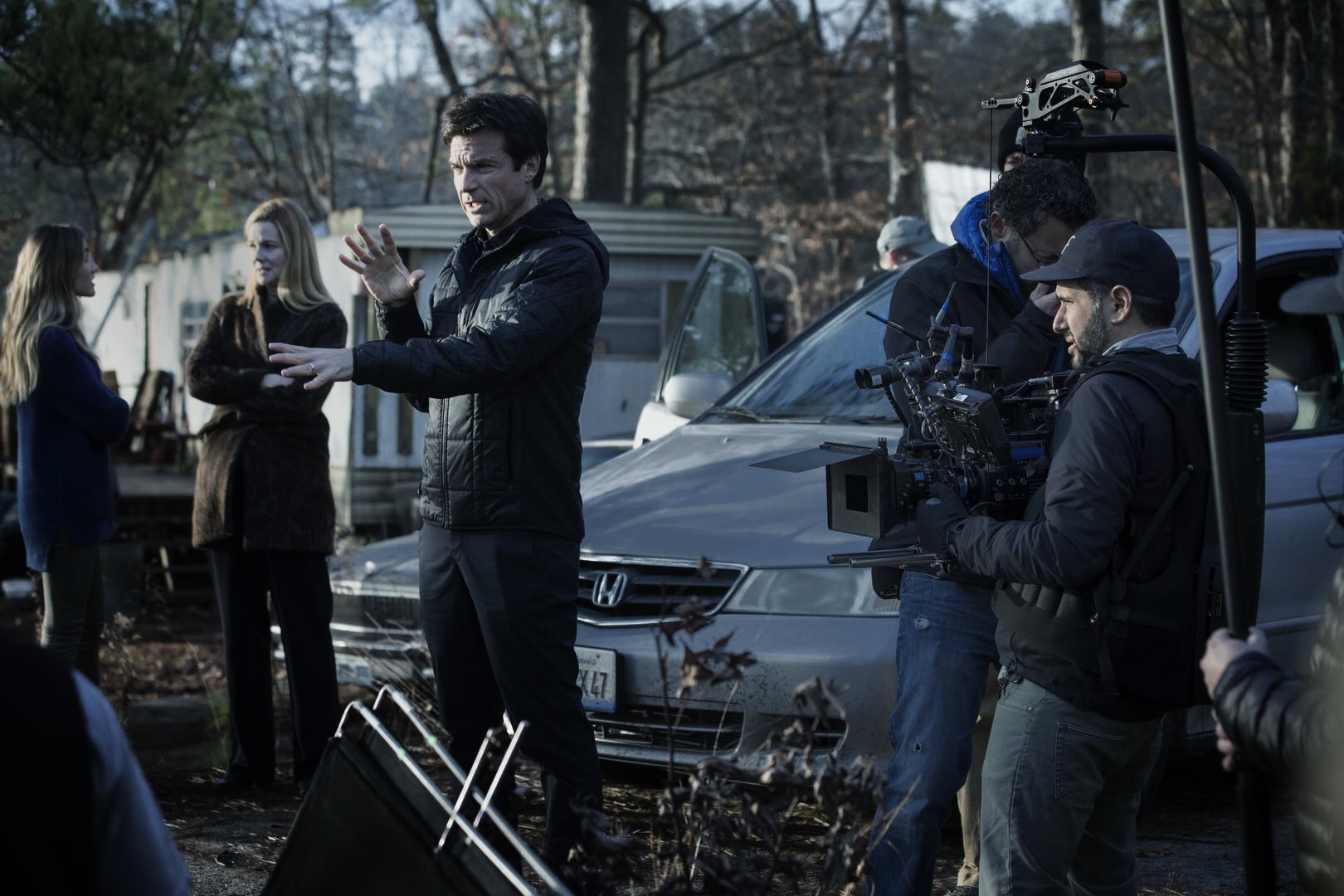
PATEL: Having 8 days for our editor’s cuts really allows us to work the episodes to a more polished level. Having this time allows us to experiment and be more creative with our episodes, thus advancing the cuts in prep for the director to arrive. I also like the fact that I may not need 4 days per episode. For example, say episode 1 out of my 2 is in much better shape, I can then manage my time and use the 8 days to my advantage – potentially using 3 for one episode and 5 for the other episode that may need more work.
HULLFISH: What is the workflow for getting the dailies from Georgia to you and into your ISIS system?
MOLLO: Camera cards leave set and go to Company 3 in Atlanta. They send the dailies to Encore here in LA, where they are loaded onto a drive. Our post PA picks up the drive in the morning and my assistant copies the files onto the ISIS. She then organizes the bins and makes the Group clips and I’m good to go!
HULLFISH: Do you each have your assistants set up your bins and prepare your dailies the same way, or are you each unique in your set-up before editing?
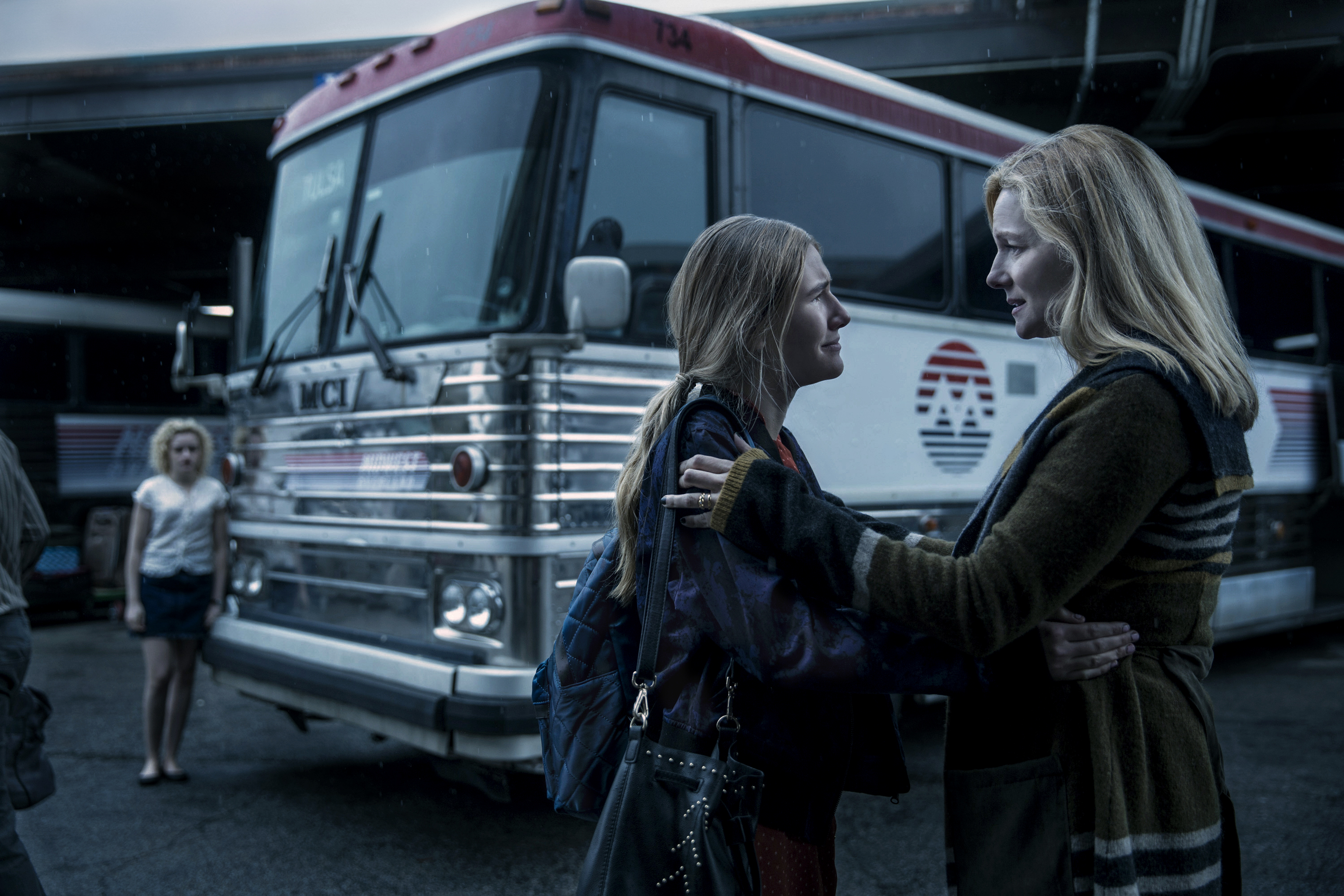 MOLLO: We both work in frame mode where we can see the individual cameras of a grouped clip but I think otherwise we have our own methodology. I have all the footage organized into my bins with a mark to differentiate selects. I usually keep the setups in the order they were shot except in the case of a big scene where I’ll reorganize the bin so that the setups are in the order they’re needed in the scene. In the case of a scene shot with only one camera, I’ll have all the takes edited into a sequence so I can run through them back to back. I’m not locked into any one method, it really depends on how many setups have been shot. But once I organize that bin, I ask the assistant not to change the arrangement because I get used to where things are. Within a take I use markers for restarts and lines of dialog so I can find my way through takes easily.
MOLLO: We both work in frame mode where we can see the individual cameras of a grouped clip but I think otherwise we have our own methodology. I have all the footage organized into my bins with a mark to differentiate selects. I usually keep the setups in the order they were shot except in the case of a big scene where I’ll reorganize the bin so that the setups are in the order they’re needed in the scene. In the case of a scene shot with only one camera, I’ll have all the takes edited into a sequence so I can run through them back to back. I’m not locked into any one method, it really depends on how many setups have been shot. But once I organize that bin, I ask the assistant not to change the arrangement because I get used to where things are. Within a take I use markers for restarts and lines of dialog so I can find my way through takes easily.
PATEL: Cindy and I have our bins set up pretty similarly. I always like to see all my dailies in a bin with the groups (representative frames), and don’t like scrolling in the bin. If the bin becomes too large, my assistant (Elliott Eisman) knows to split the bin into two parts and so on. I also like to do my own marking with locators etc.
HULLFISH: Sometimes editors working together have a chance to speak into each others’ edits. Is that the case with you two? Or are you pretty much working without being able to view and comment on each others’ work?
MOLLO: I’ve worked that way on other shows but this season the schedule was pretty tight, one of us was always in dailies while the other was in Director’s cut and then Director’s cut when the other was in Producer’s Cut, etc. Our cuts were posted to Pix from Director’s Cut on so I’d watch Viks episodes there when I could.
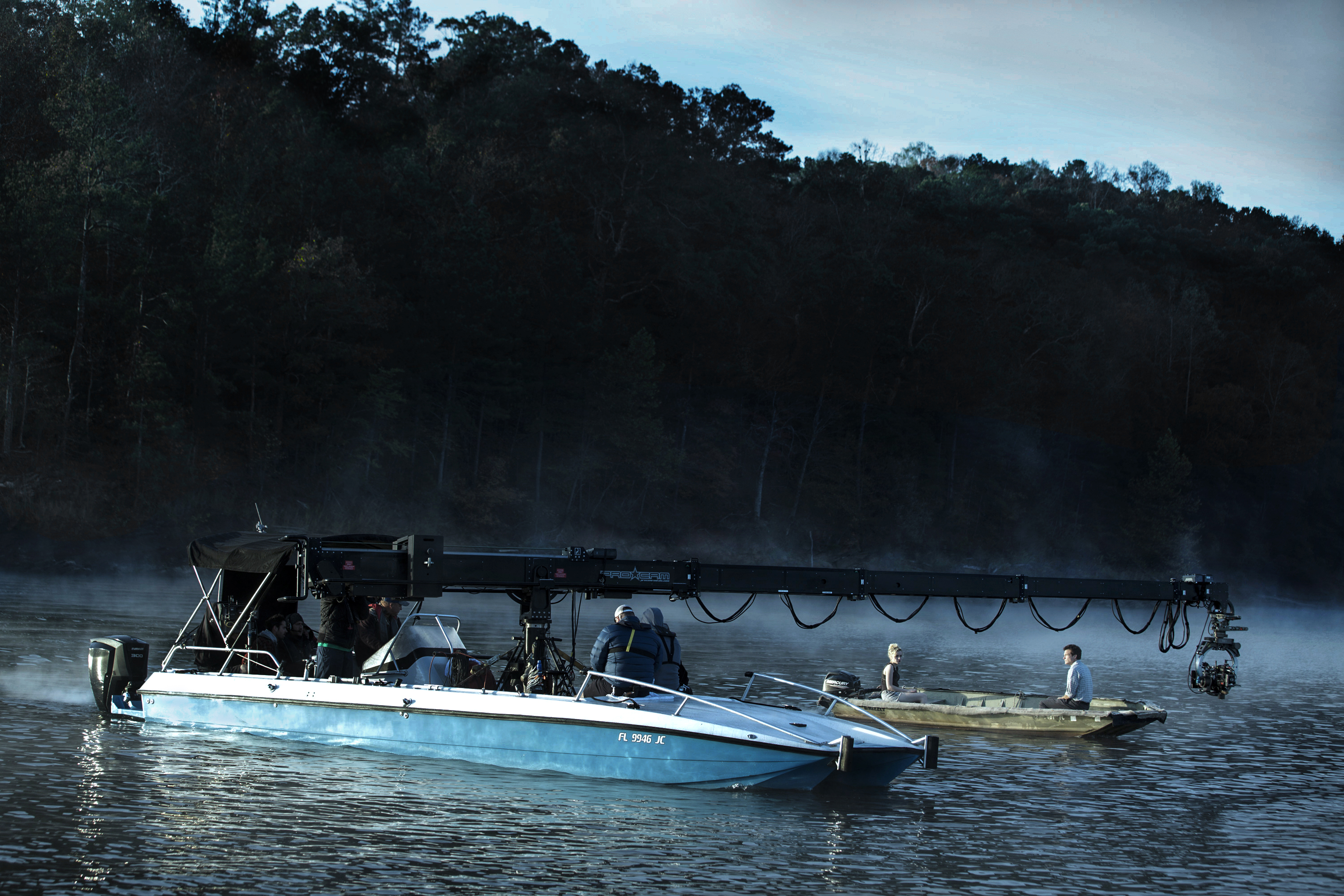
PATEL: Season 1 we had much more time to look at, and comment on, each other’s work as we had another editing team, and the schedule wasn’t accelerated. I would ask both Cindy and Adam Wolfe (3rd editor – season 1) for feedback. This season, Cindy and I were asked to edit 5 episodes each. With one team less, we had our assistants help with a block each, promoting them to editors with us. With season 2 being on an accelerated schedule also, there really was not much time to look at each other’s work, so we relied more on our assistants for feedback, and used them as sounding boards, which was valuable for both us and our assistants.
HULLFISH: What is it like to work with a director who is also a lead actor? Is it difficult to discuss his performances?
MOLLO: Not at all, Jason is as objective and, at times, as hard on himself as anyone else. He looks for a certain natural quality in the performances. He sometimes goes through the takes with us indicating preferences and other times sends comments thru the script supervisor or leaves them on Pix. I’ve worked with a lot of actors as directors (Robin Wright, Kathy Bates, Adam Arkin, Clark Johnson) and they’re all looking for that same honesty and truth in the performances. In the case of Jason as Marty Byrde, he also has a certain cadence in those very long speeches that we have in our show.
PATEL: It’s fantastic working with Jason. He is aware of not only his own performances, and the subtleties that come with that, but also all the other actors involved with the show. I find him to be very critical of his own work.
HULLFISH: How does Jason like to collaborate during editorial?
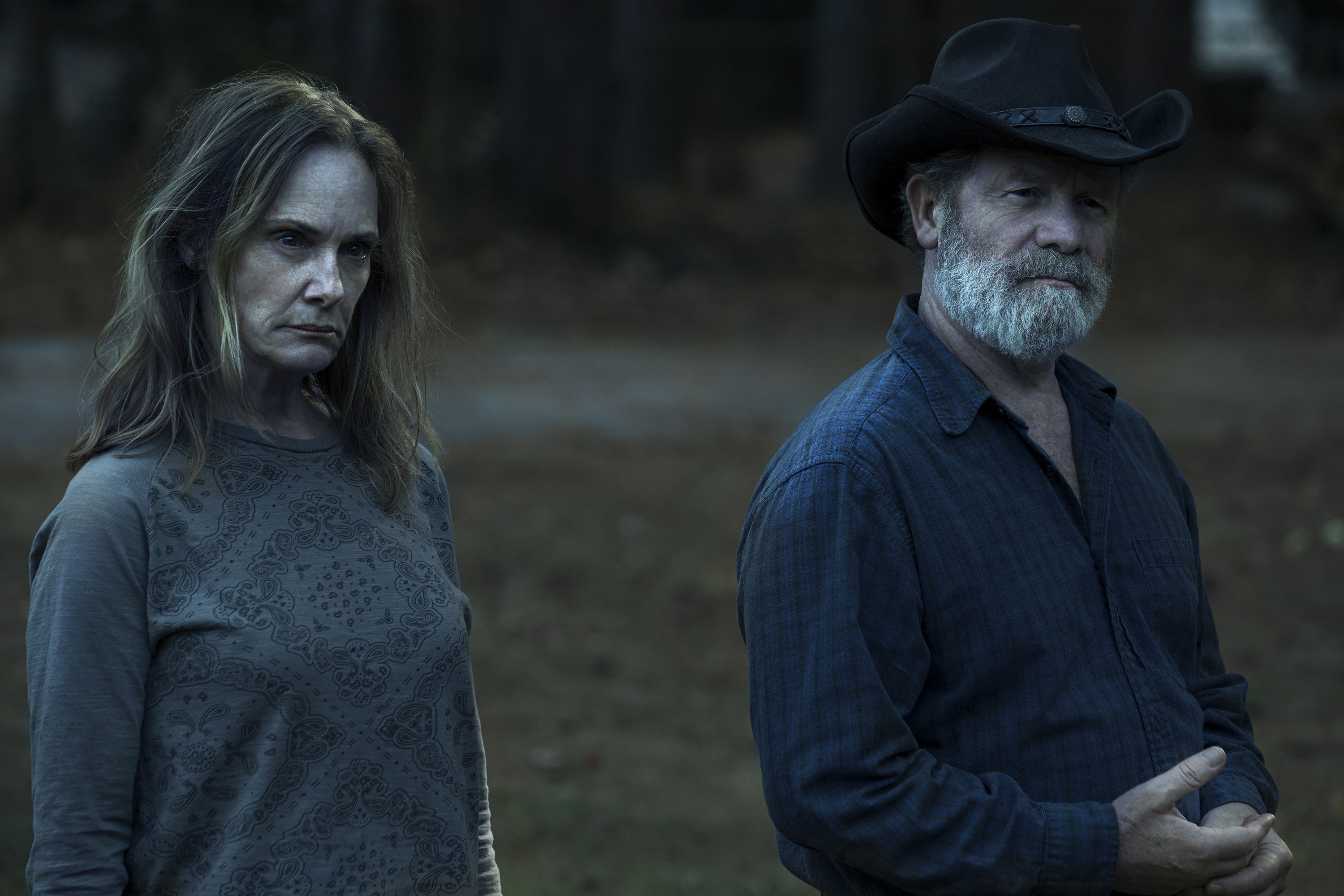
MOLLO: As mentioned above, Jason gives notes to our script supervisor Pam Fuller while he’s shooting that she incorporates into her script notes. For example “tell Cindy that I want to play most of this scene in the master and only use coverage at the end.” Pam is also really good at indicating his preferences even when he doesn’t explicitly state them. She’s a great resource for us.
PATEL: Personally speaking, On the episodes that Jason directed, we basically lock ourselves in the editing room for about 8 days and meticulously work our way through the shows. Once we have done an entire pass of an episode, we always screen the whole show and take notes. We repeat this making small tweaks each time. Jason also likes to bring Chris Mundy (showrunner/EP) into the process early on. This is immensely helpful as we can identify what is working and what is not, allowing us to continue our work. On the episodes that Jason hasn’t directed, we do notes via Pix from Atlanta.
HULLFISH: The pacing of the scenes is quite deliberate. Nothing is rushed and time is left to dwell on reactions after and before dialogue. How is it to pace this stuff compared to other shows you’ve cut?
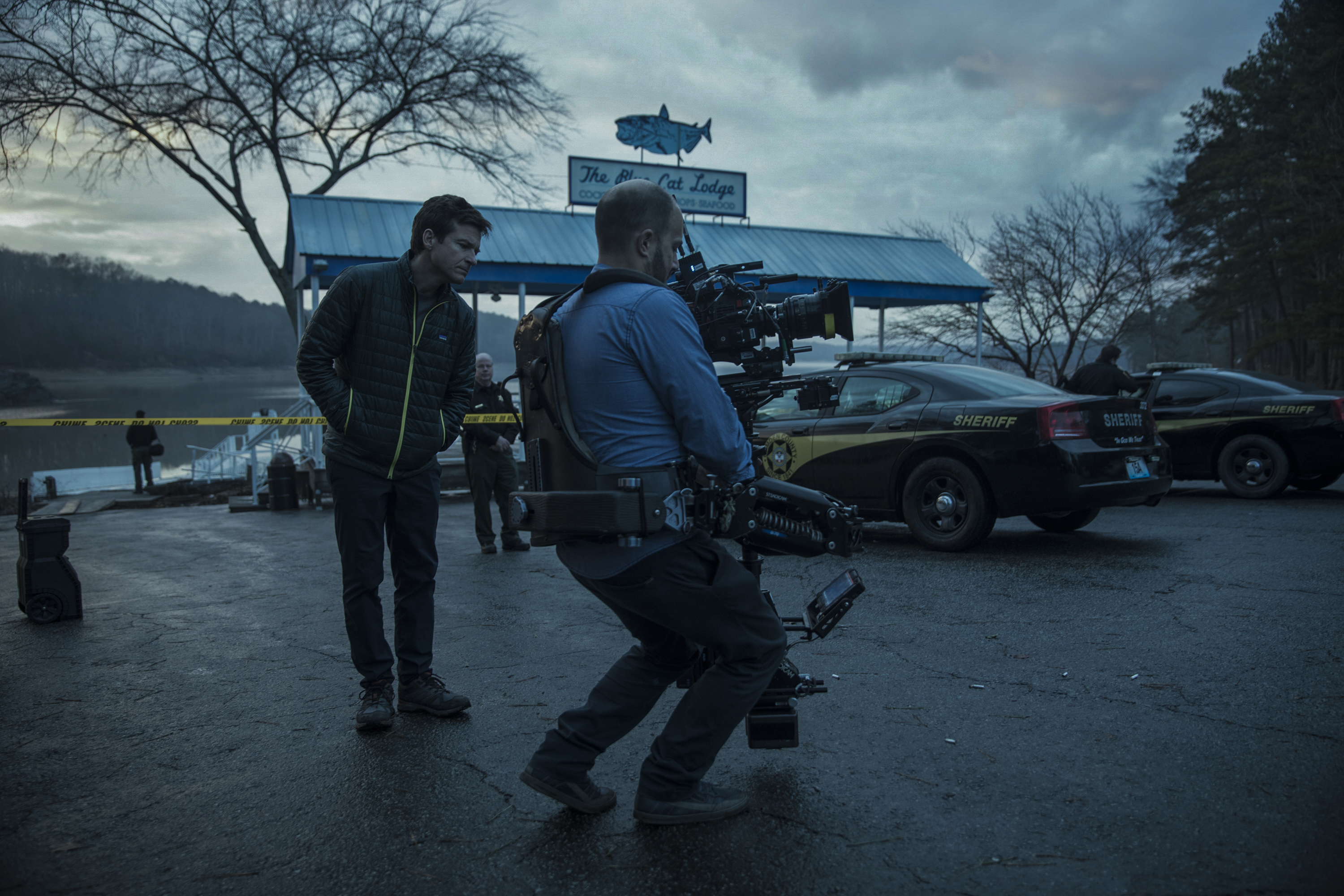
MOLLO: The pace is different from a lot of shows but for me, it’s very similar to House of Cards and Mad Men. Sometimes we play the whole moment from an actor leading up to their line. While working with Jason on the first two episodes, we discussed an editing manifesto for Ozark: “indifferent, meditative and hard to get.” I’d keep that in mind as I approached the scenes and wouldn’t try to be too manipulative with the cutting or the music.
PATEL: We make strong pacing choices on the show, and as you said, the pacing is deliberate. Jason is a firm believer of ‘owning’ a decision. If we cut to black, stay in a shot for an uncomfortable time, or even do something which is not the norm, we always say ‘let’s own it.’ I feel every show I’ve worked on is different, and you really have to dial into what’s working to the show’s advantage. Thankfully we have a stellar cast on Ozark, who gives us excellent performances to dictate this meditative pace.
HULLFISH: What’s the value or the purpose of pre-lapping dialogue: like just before the pastor tells the guy why he couldn’t hand out the hymnals after the scene where the woman is figuring out that something is hidden in the walls of the cabin.
PATEL: I specifically did this for pace, as I felt there was some shoe leather on the B side of the scene – Jacob and Ash walk Mason into the kitchen, and getting settled etc. I wanted to be present in the scene with Mason and Jacob from the get go, and pre-lapping the dialogue over Rachel searching the room achieved this. Sometimes we use pre-laps for pace, other times it is to emotionally connect moments and thoughts, and sometimes even to throw the audience off for a beat.
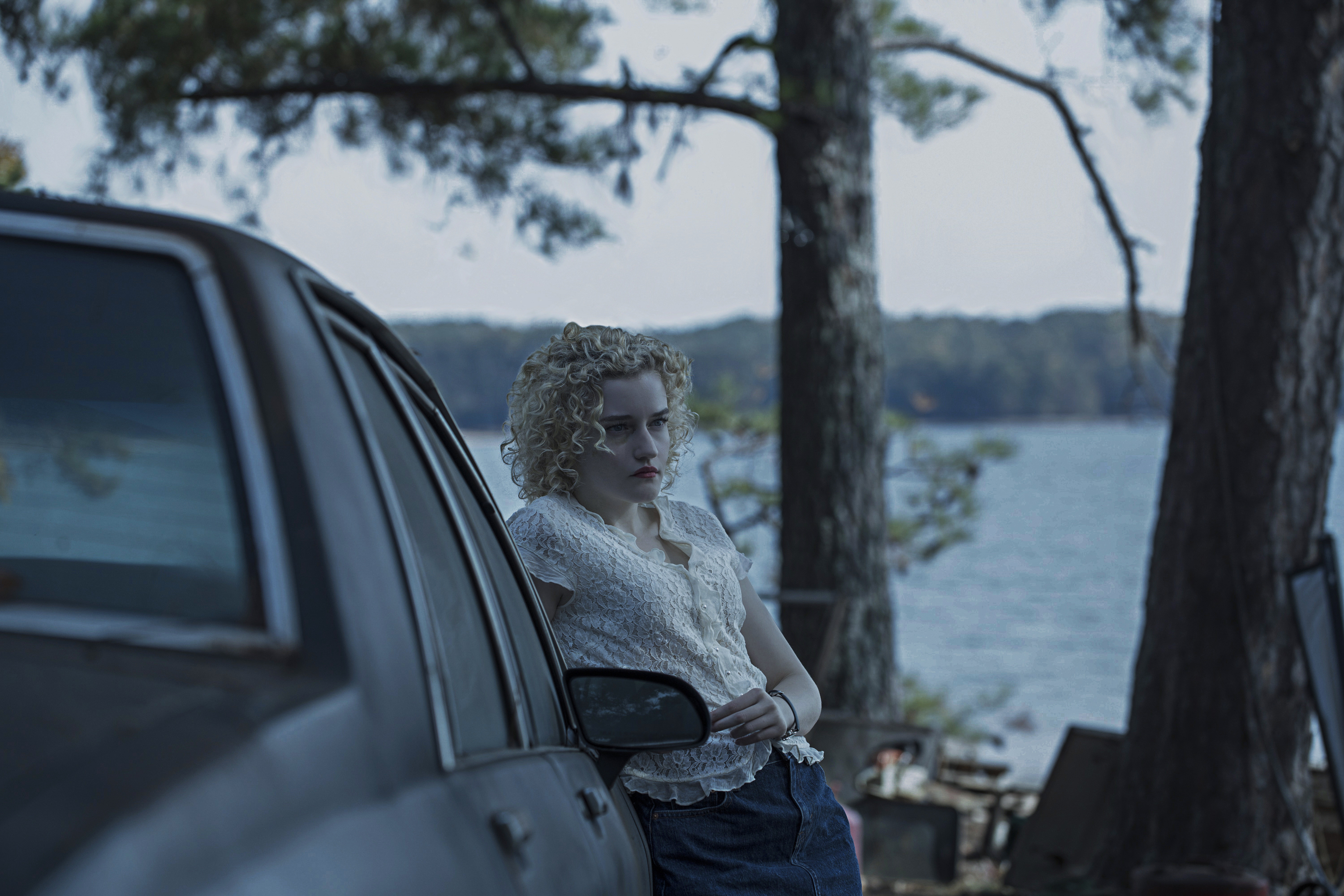
MOLLO: There were pre-laps written into the first script and every script after so it’s always been part of our DNA. It’s a really effective way to condense time and to propel the viewer into the next scene
HULLFISH: You mentioned that your assistant editors were given a chance to cut on this show. Are you seeing a value to your own editing in having to verbalize and discuss the changes that need to be made in their edits?
MOLLO: Heather Goodwin Floyd and I have worked together for most of the past ten years, starting with Mad Men and The Book of Eli. She took some time off to have her family while she was still an assistant and since we’ve started working together again, I’ve been very invested in helping her make the step up to editor. I found that mentoring her has re-ignited my own interest in editing, in general, and made me really fall in love again with the style and tone of Ozark, specifically. It was enjoyable to discuss with her how to make a scene more of an “Ozark” scene by cutting less, choosing not to play sound or not to use music, avoiding going too close in a scene or even at all. It’s been invigorating.
HULLFISH: What are some of the specific pieces of advice that you’re able to give to your assistants as you critique their work?
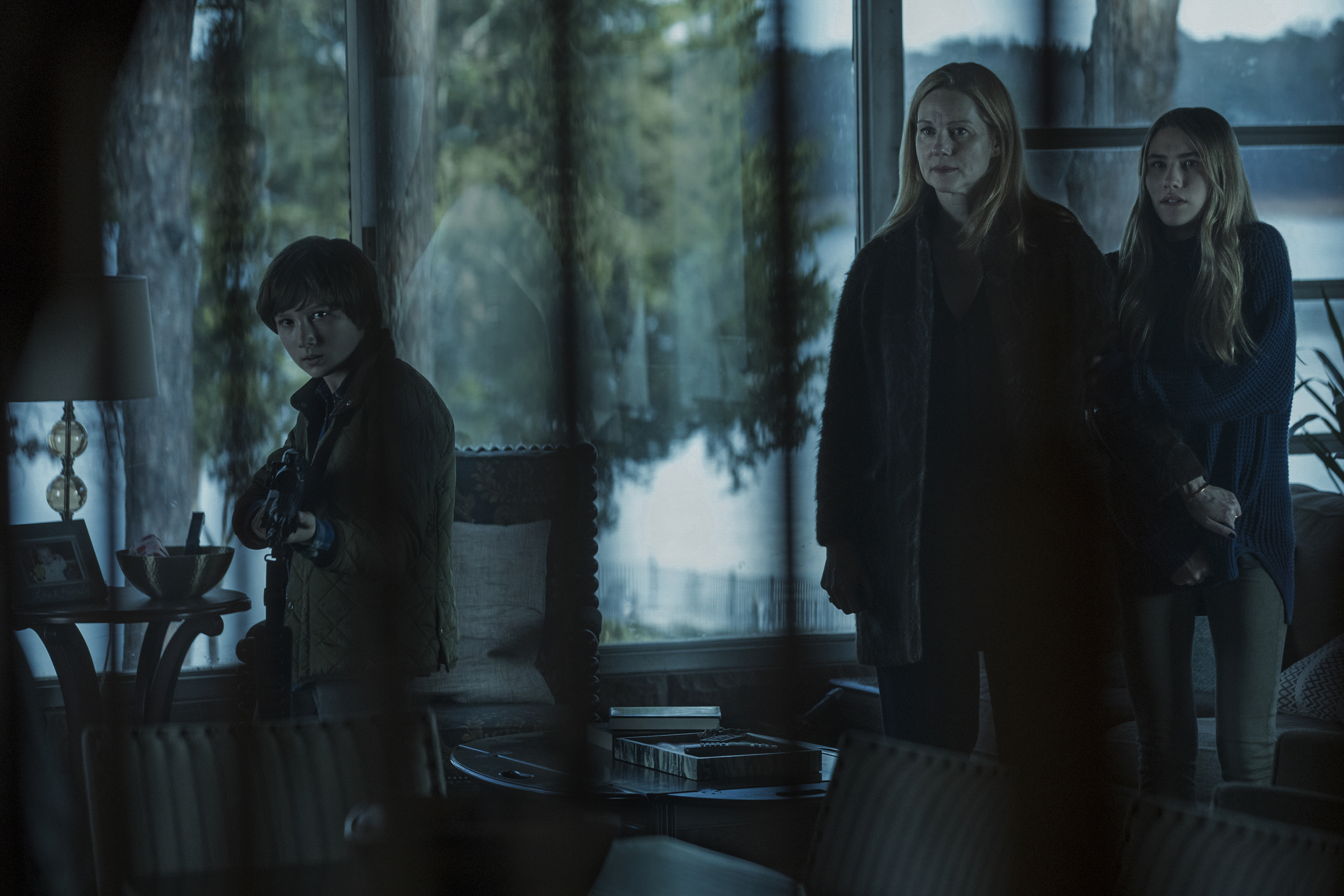
MOLLO: I asked Heather and she said:
“Do the note to the best of your ability and if you feel strongly that it doesn’t work, or there is a better solution, have an alternate cut to show.”
“Cut for performance over continuity.” (unless it’s really distracting.)
“Think about why you are cutting, avoid unmotivated edits.”
“Be bold, but be appropriate.” (I usually phrase this one as “just because you can, doesn’t mean you should.”)
HULLFISH: In the final episode, was it scripted to do the intercutting of Jason talking to the guy on phone when he’s assembling the trampoline, saying he’d talk to the preacher… hearing about consequences as the preacher comes home…Or after the toenail scene going into the FBI talking to the sheriff?
PATEL: Yes the intercut was scripted, although I added more intercuts than what was on the page. Also, I tried to dramatise the moment so that I could really build the tension and mystery of what Mason (Preacher) was looking at. Holding off on the reveal of the baby till the bitter end was the peak of the scene, and then carrying this into the chapter card with the sound of the baby cooing was something I felt was emotionally dramatic, as it really fed into Mason’s surprise.
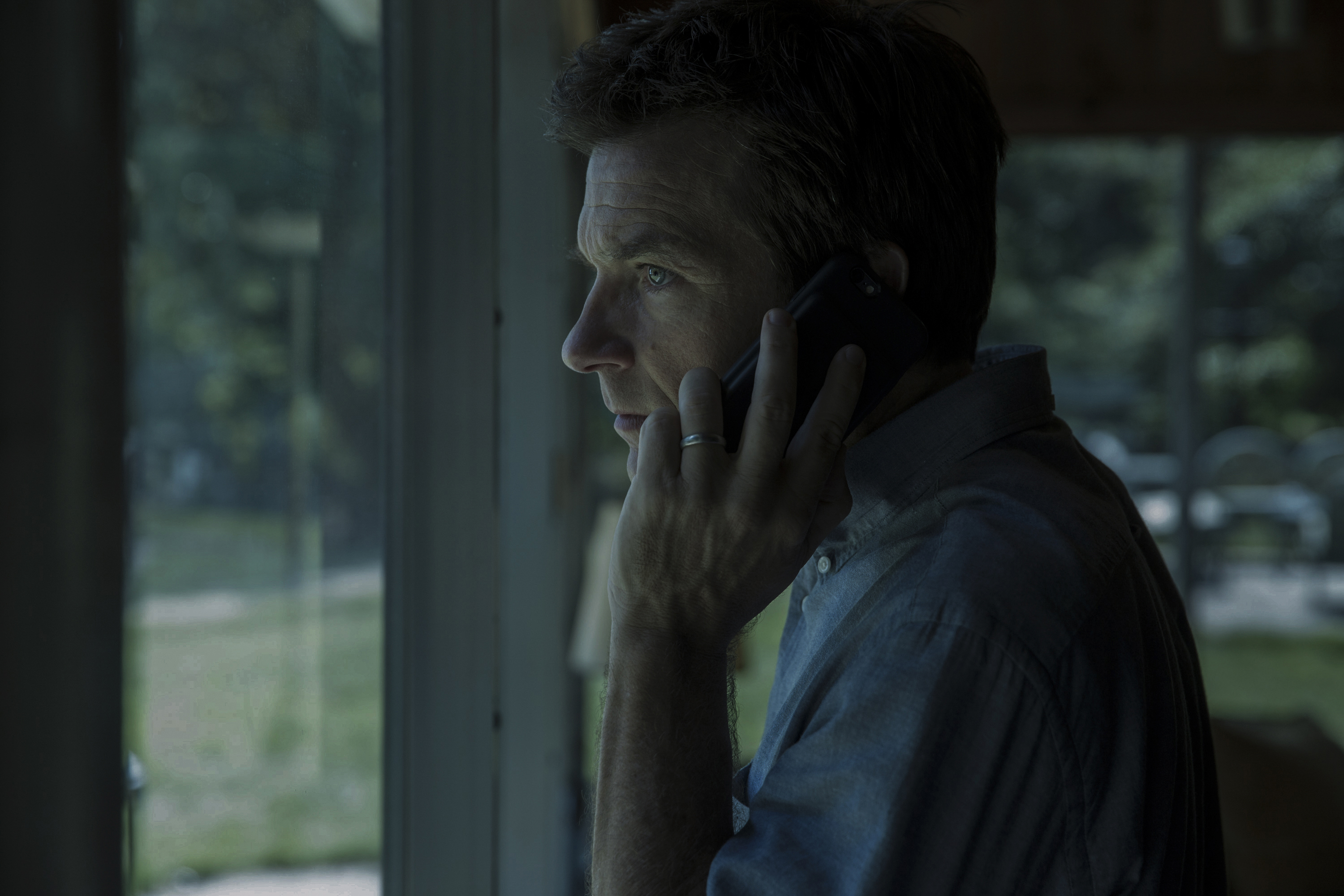
HULLFISH: Let’s talk about the specific timing of adding music cues. One in particular that I remember is in episode 9 or 10 when Marty is pitching the idea of the riverboat casino to launder money… Most of the scene is played dry, but then, as the wife seems to come to a realization or decision, a cue begins right in the middle of the scene. What helps you decide when to start a cue?
MOLLO: I think we all give the actor the moment and then come in with music to support. Fortunately, the performances on our show are so good that we don’t need to bring music in too early to create an emotion, it’s all there.
HULLFISH: What are some of the qualities that you value in an assistant editor?
MOLLO: Technical proficiency is obviously really important. I also appreciate someone who enjoys talking about the story and how to tell it better. An understanding of the hierarchy of the cutting room (or the mixing stage) is important, too. Ideas are welcome but there’s usually a clock ticking or a calendar page turning which sometimes creates a need for speaking with one voice. And then I just value someone who is interested in different things and can talk about something other than editing.
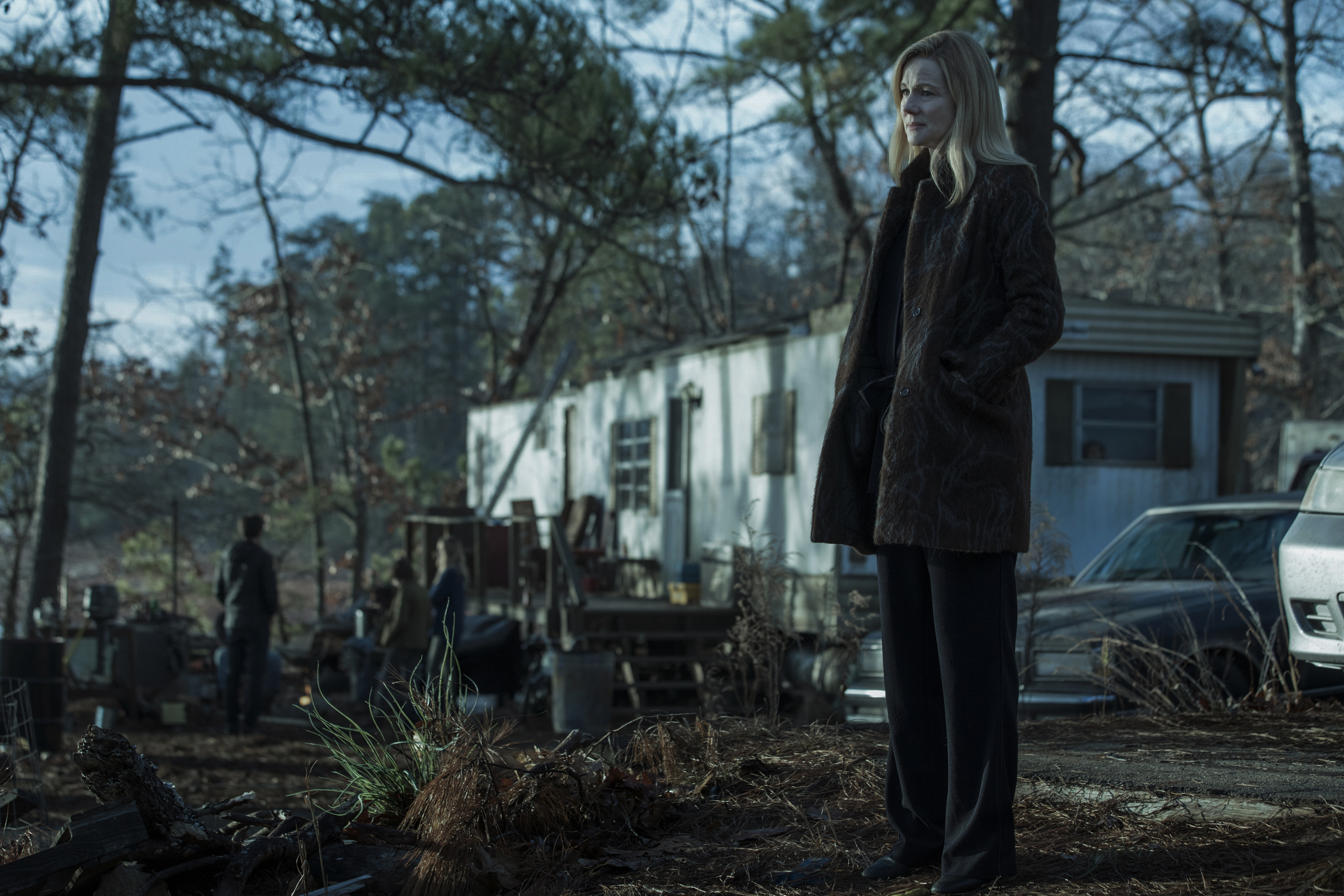
PATEL: We spend a great amount of time with our assistants. Personality and attitude is something very important to me. Enjoying each others company makes the process much easier, and makes the collaboration that more enjoyable. I also like to work with assistants that want to be editors, as I enjoy mentoring them. Specifically, I like to work with assistants who enjoy doing temp sound effects, this is important to me, and to the way I present my cuts – I appreciate assistants that take great pride in their sound work, as this is something they can really take ownership of.
HULLFISH: What makes you feel like you want to further develop them to move up to the edit chair?
MOLLO: I like to mentor assistants who think like I do about film and also people who do not think like me. I sometimes learn more from the latter. I like someone who isn’t rigid in their view of the film and is open to working the material to sometimes find surprising things.
HULLFISH: Viks you’ve mentioned that you will change the script – cutting lines or rearranging scenes – in the editor’s cut. To some people that I interviewed, changes like that are better left until later in a director’s cut. What is the value of doing these changes earlier? Do you have to know the director well to do this without pissing someone off? I always thought the editor’s cut should be a direct reflection of the script.
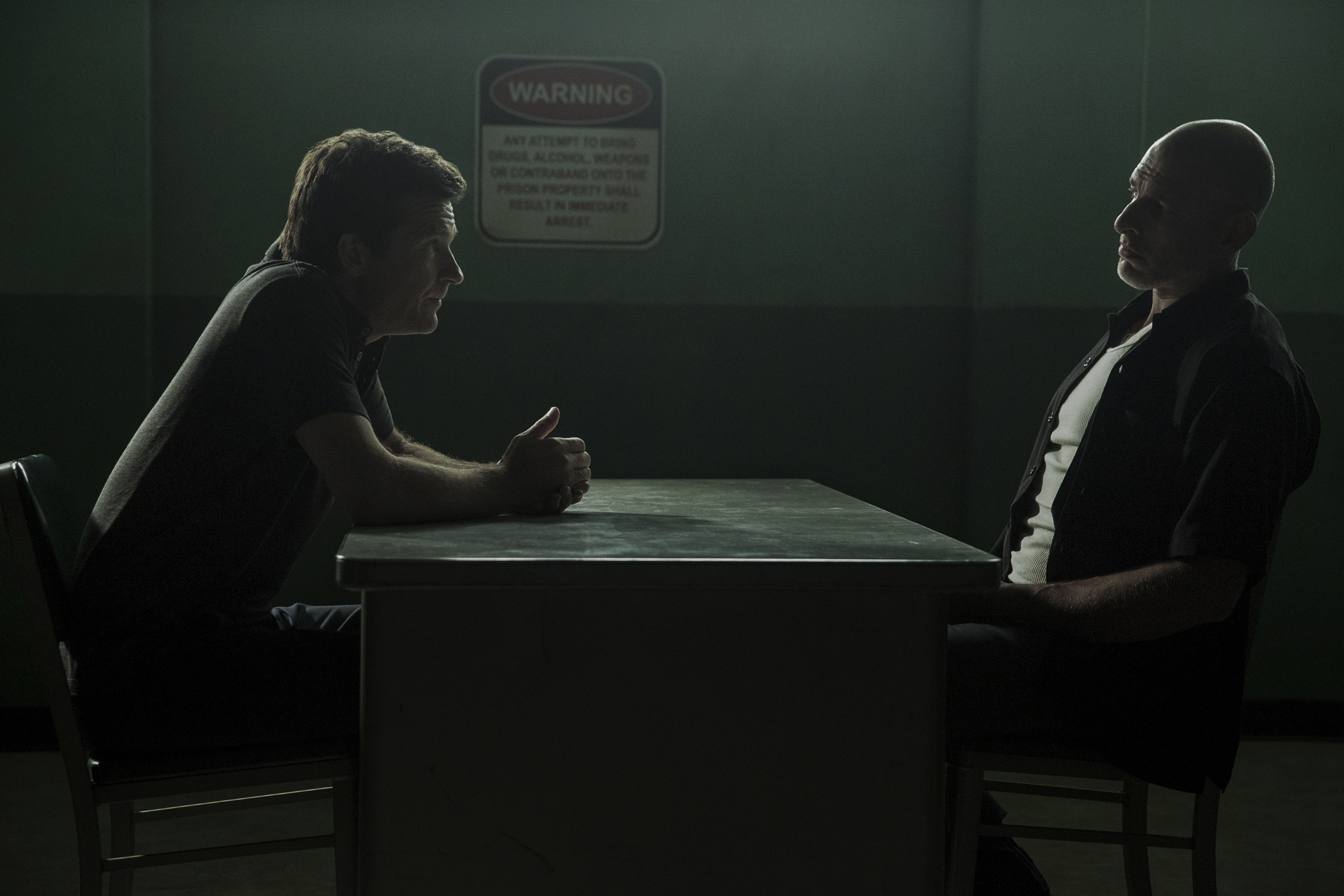
PATEL: Just to be clear, I don’t cut any lines in my editors cut. I don’t believe as editors we should do that, because at any point the producer/writer may want to look at a scene with all of the dialogue in, and it’s always best to have that. However, I do take ownership of my episode and don’t just present an assembly of the script. I like to advance the filmmaking in whatever way I can. Sometimes when I watch my first cut, I just know that certain scenes will play better by being restructured – so I always go ahead and do that, or If I can do something dynamic by pre-lapping or intercutting sequences together, I usually commit to this.
MOLLO: I always assemble the script first so that I have it to fall back on. (There have also been circumstances where a studio or producer has asked to see the show with all the scenes in scripted order.) So that exists as the Assembly and anything I do after that is the Editor’s Cut, which is my interpretation of the script where I change scene order or omit lines. When we were cutting Kaleidoscope, the 8th episode of the first season, it was a non-linear origins tale that couldn’t be told chronologically because it was never written that way. But as I was assembling the show, there seemed to be an order that made more sense than what was scripted so I did move scenes around early on. (The funny thing about that episode is that it was just the beginning of the restructuring we would eventually do.)
HULLFISH: There’s a really interesting series of edits to show the headspace of the preacher when he is about the hand out the hymnals to the people listening to his sermon out on the river/lake. Talk me through that creative decision to do that.
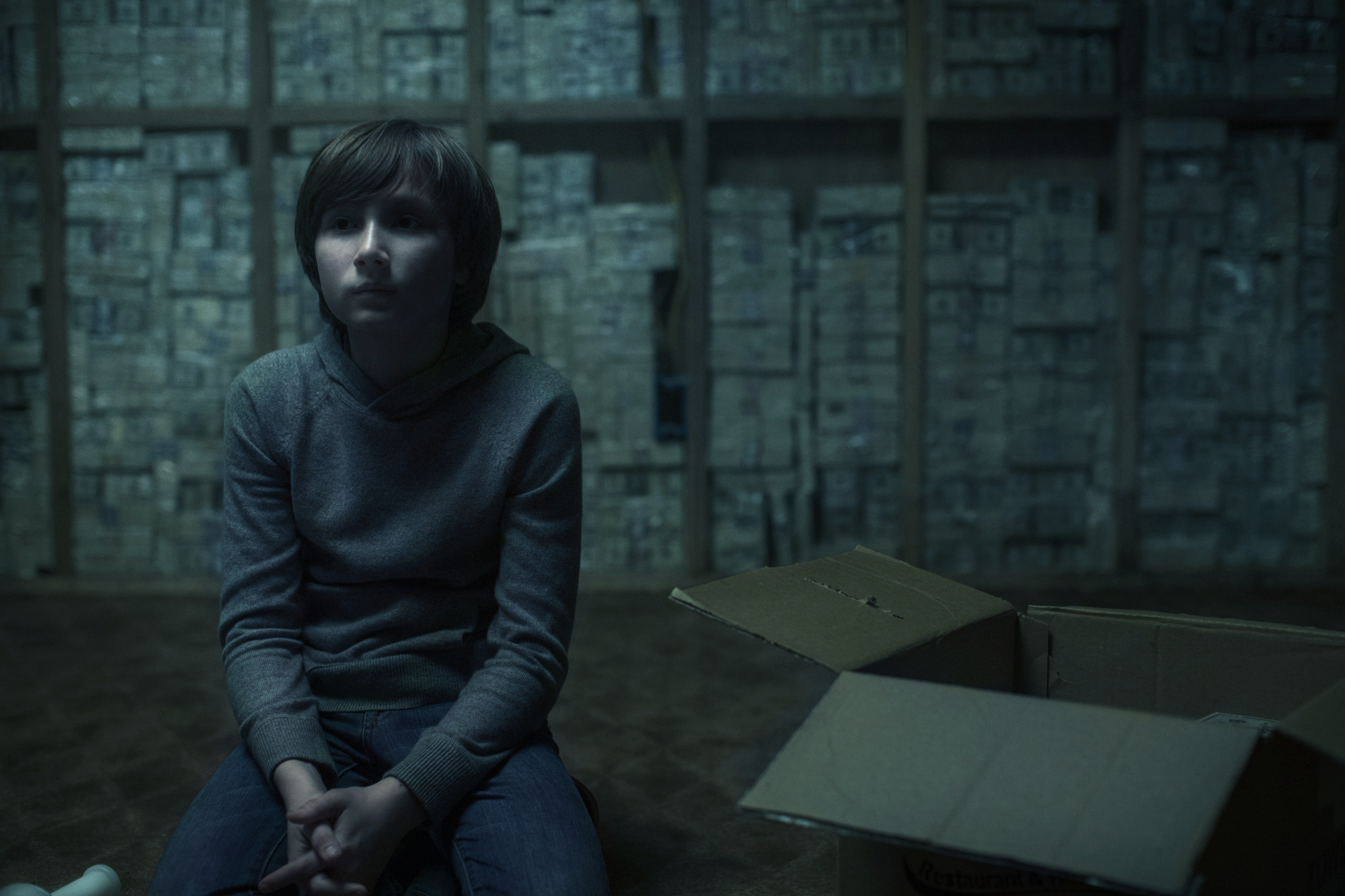
PATEL: I really wanted the viewer to engage with Mason’s turmoil, and as I was putting the scene together, initially i started playing with dropping the sound out and having the score take over, really engaging his POV. However, it really didn’t have the impact that I was hoping for. This led me to trying something different. I started using other takes of the same moment, and separating the dialogue from picture. This fractured, loss feeling felt more in tune with what Mason was going through, and achieved what I was hoping for. However as much as I liked it, I wasn’t sure what Jason would have felt. I ran with my idea for my editors cut, and thankfully he liked what he saw, and it stayed in the episode.
HULLFISH: What is your approach to a blank timeline? Do you have a technique for the way you watch dailies? Do you do selects reels?
MOLLO: Every scene is different for me but I usually start with the selected takes to get the structure of the scene down. (I always watch the first take because it’s often pretty good.) I try not to worry too much about continuity in the first pass and sometimes I’ll even cut two performances of the same line back to back for comparison. If there’s a line or a moment that isn’t working then I may dive into the rest of the takes on that first pass. Then I’ll reexamine the performances and make sure that I have the best takes on each line. I try to make the scene work the best it possibly can before I add music. If there isn’t a lot of coverage, I watch everything before I start cutting and build the scene around the best performance and let that take dictate a structure.
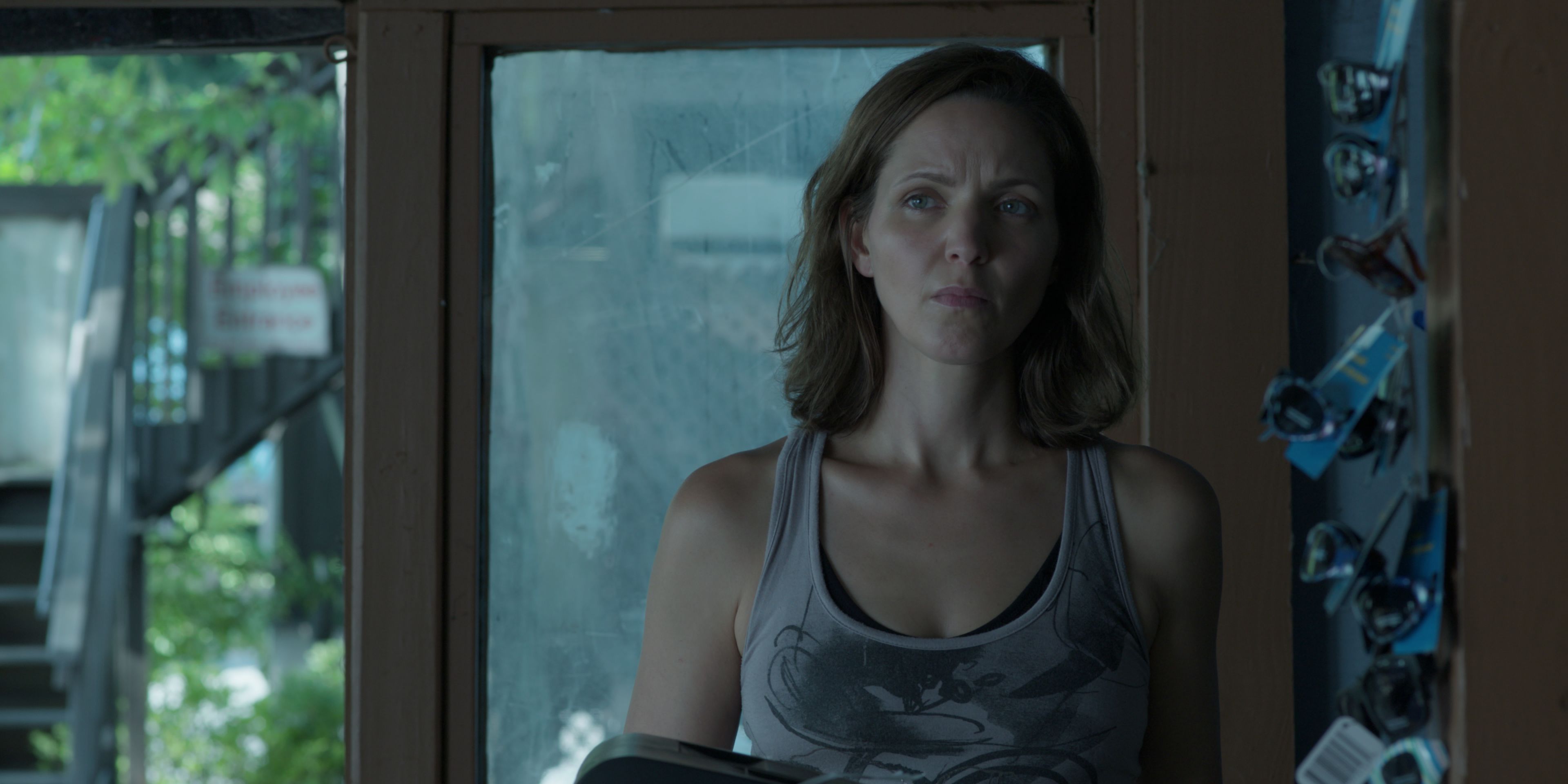
HULLFISH: We discussed the fact that sometimes it’s good to just use circled takes to rough in a version of the edit and then go back once the structure of the scene has been outlined and THEN watch ALL of the dailies. Does having that rough cut then inform the way you see the dailies since you’re watching them in context?
MOLLO: Absolutely. Sometimes there are mistakes or really natural moments in those other takes that inspire something original. I go back and add those to the first cut.
HULLFISH: Are there any “rules” that you have for this series that you maybe don’t have for some other series you’ve edited – like no pre-laps or no back to back to back close-ups in a dialogue scene or anything like that? What kind of editing keeps this show “on brand?”
MOLLO: My principal rules are to not be too cutty or make any unmotivated edits. We also have some camera moves that are signature shots like the “Ozark Wrap Around.” An example of that is an over-the-shoulder of Wendy as she’s talking to Marty. She exits the shot and the camera starts to move in front of Marty as he turns toward it in profile. We see his “wheels turning” and know that he’s thinking about his next move.
HULLFISH: As you discuss losing various scenes, what criteria do you use for whether something should go or not? Can you think of a specific scene that was dropped and why it was decided to drop it?
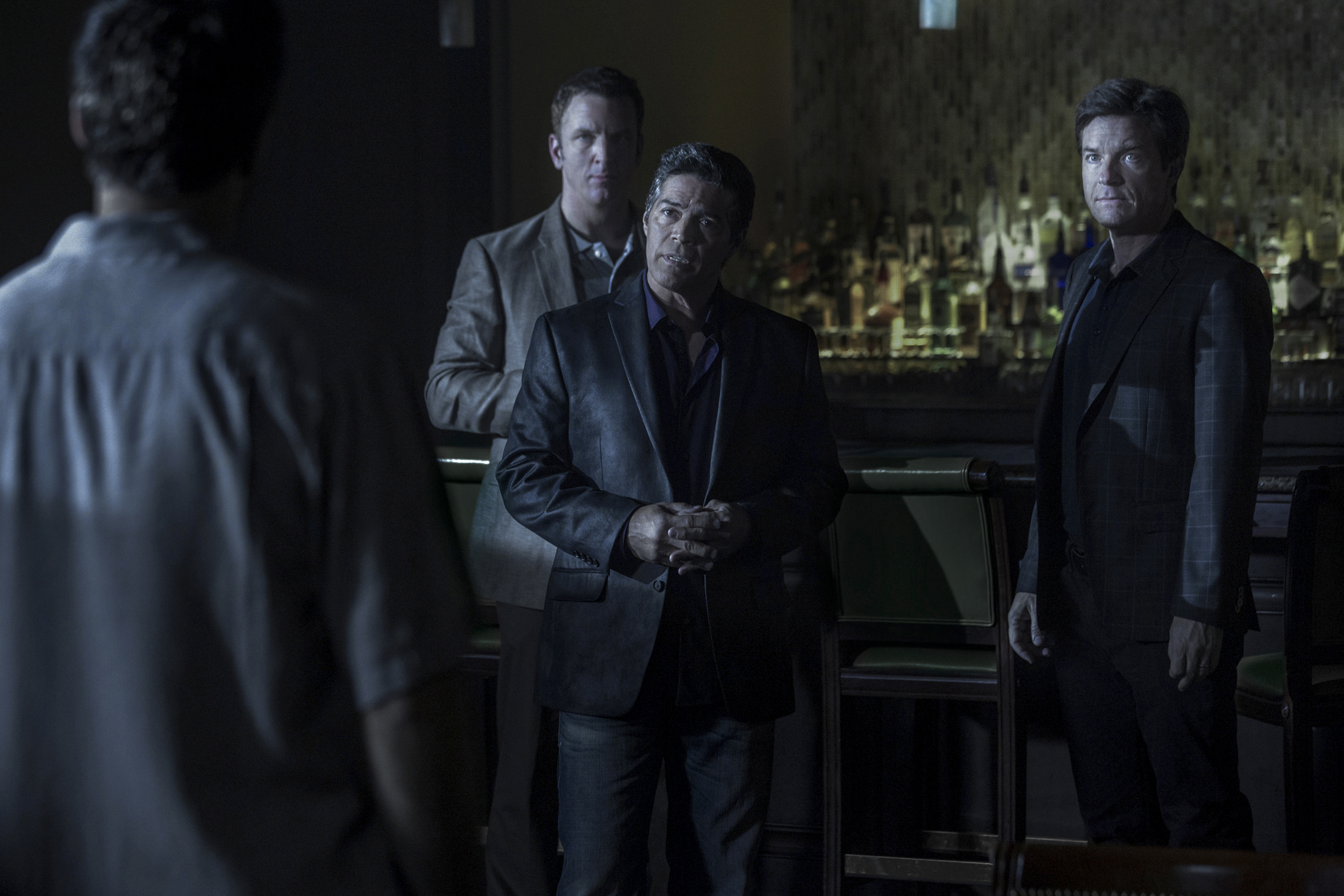
MOLLO: If a scene doesn’t advance the story or is redundant, it’s not necessary.
HULLFISH: Is there a specific scene(s) that you’re really proud of? What makes that scene stand out in your mind?
PATEL: There are many scenes that I’m proud of, but I would say I’m most happy with the last 20 minutes of the finale. From the moment Marty is stopped by the FBI leaving the Snells house after Del’s death, to the end when he is reunited with his family. It was a challenge to make all of this work, both on a dramatic/emotional level. Jason also had the idea of using the Beethoven classical piece early on. The tricky part of that was to make the ending land with Marty and the family, Marty alone on the trampoline, and with Mason baptising the baby. I actually built the sequence backwards, knowing I wanted some of these moments to work with certain parts of the music, and for them to stay in sync. Everything before Mason walking into the woods with the baby didn’t need to be tied to the music so deliberately.
MOLLO: In the 7th episode Nest Box, Marty and Wendy have a huge fight as Charlotte goes for a swim at dusk. Their anger is controlled but raw and they say some hateful things to each other as Charlotte gets disoriented and loses her bearings out on the lake. She goes below the surface of the water as Marty and Wendy say things that can never be taken back. Just when it seems she’s about to give up, she feels the bottom beneath her and springs up to safety. But her parents may not be in a safe place. Intercutting of the two scenes was indicated in the script but we moved the Charlotte moments around as we trimmed lines in the fight. The performances made it great.
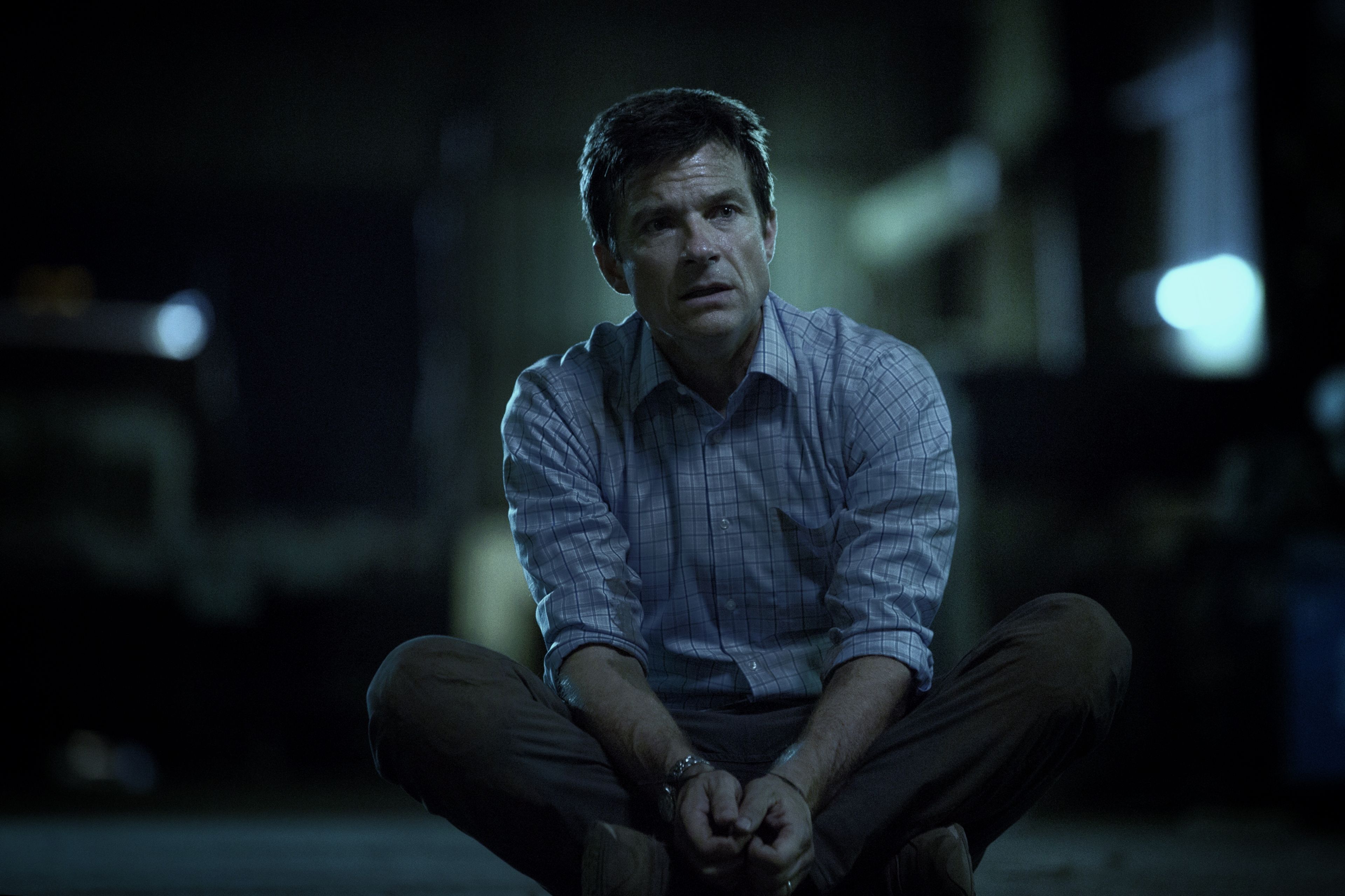
HULLFISH: Was there a scene(s) that was really challenging to edit? What made it so difficult? What finally “broke” the scene for you and made it work?
MOLLO: The opening to the pilot was much longer in the script. There were some visual effects that took up too much screen time and got tossed out early on. Then there were other VFX that we needed to create to clarify the story. As we got close to locking the episode, we got a note to reconsider the whole flash forward concept. It was too late to totally re-conceive the storytelling that we were so committed to so we revisited the score and even considered using a source cue instead. It was my job to patiently explore all these options and review with Chris and Jason. In addition to trimming the voice over, we worked with the composers to turn the opening score inside out and start with staccato percussion before bringing in the rest of the instrumentation which really helped to make it feel different.
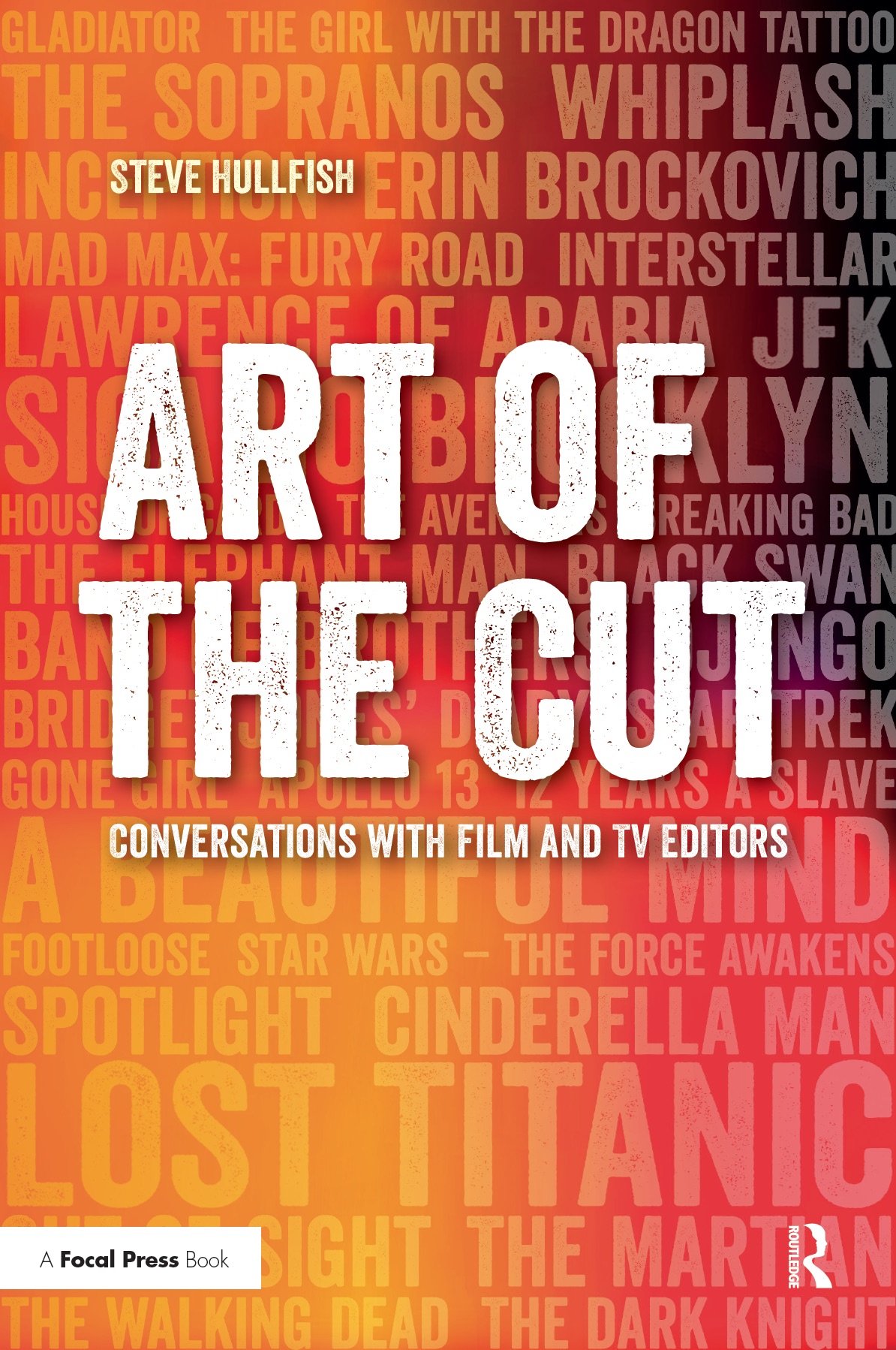 To read more interviews in the Art of the Cut series, check out THIS LINK and follow me on Twitter @stevehullfish
To read more interviews in the Art of the Cut series, check out THIS LINK and follow me on Twitter @stevehullfish
The first 50 interviews in the series provided the material for the book, “Art of the Cut: Conversations with Film and TV Editors.” This is a unique book that breaks down interviews with many of the world’s best editors and organizes it into a virtual roundtable discussion centering on the topics editors care about. It is a powerful tool for experienced and aspiring editors alike. Cinemontage and CinemaEditor magazine both gave it rave reviews. No other book provides the breadth of opinion and experience. Combined, the editors featured in the book have edited for over 1,000 years on many of the most iconic, critically acclaimed and biggest box office hits in the history of cinema.

Filmtools
Filmmakers go-to destination for pre-production, production & post production equipment!
Shop Now